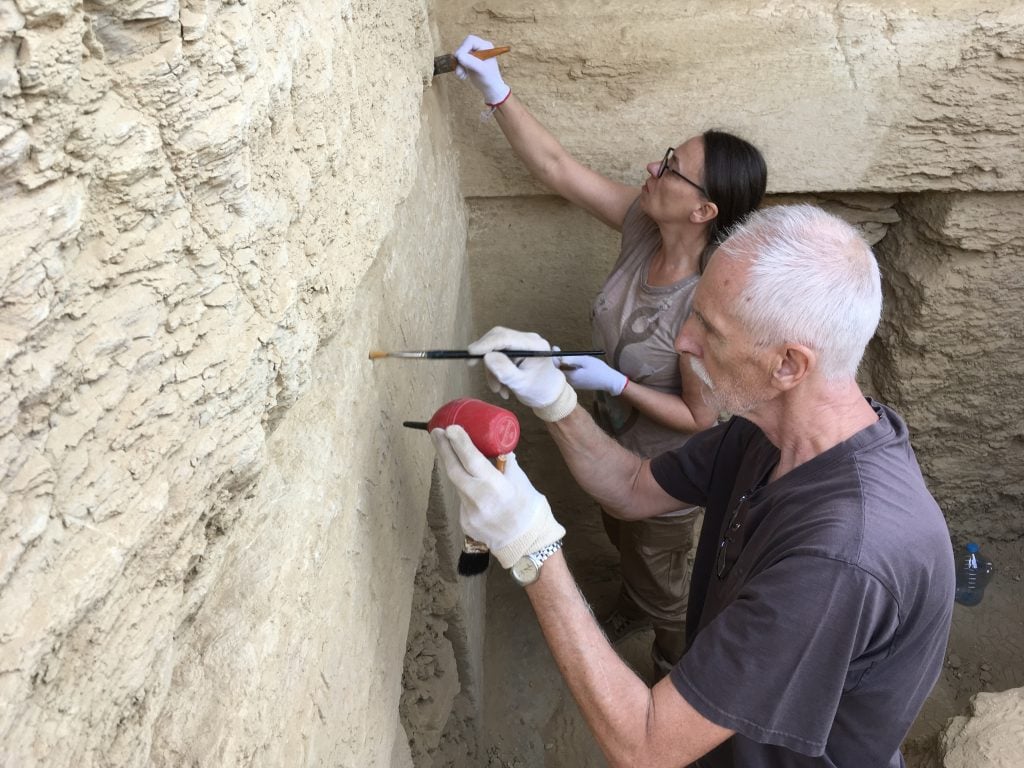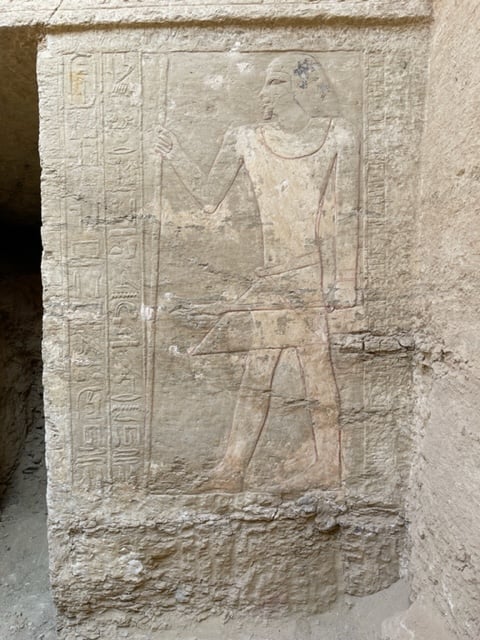Archaeology & History
Archaeologists Have Discovered the 4,000-Year-Old Tomb of an Egyptian Dignitary Who Guarded Royal Documents
The unfinished decoration suggests he died before the tomb was completed.

The unfinished decoration suggests he died before the tomb was completed.

Jo Lawson-Tancred

Researchers working in the ancient Egyptian necropolis of Saqqara have uncovered a previously unknown tomb of a high-ranking dignitary dating back more than four thousand years. The team from the Polish Center of Mediterranean Archaeology at the University of Warsaw hit upon the tomb while exploring a dry moat surrounding the Step Pyramid of Djoser, the central structure within the vast mortuary complex.
The deceased’s identity and function appear to be recorded via reliefs and hieroglyphs decorating the walls and façade of the tomb. The surviving imagery—which suggests the hand of skilled artisans, an indication of his wealth and status—depicts the occupant alongside figures leading sacrificial animals like cows and ibexes. The decoration appears to be incomplete, since the reliefs are unpainted and some sections are sketched out only in black ink—likely because the owner died before the tomb was ready.

Relief depiction of Mehtjetju on the tomb’s façade. Courtesy of J. Dąbrowski/Polish Centre of Mediterranean Archaeology, University of Warsaw.
The researchers deduced that the tomb’s owner, Mehtjetju, was a court official living in around 2300 B.C.E. His duties included guarding access to secret documents held in the royal chancellery, and acting as an inspector of the royal estate and as a priest of the mortuary cult of King Teti.
The expedition’s director, Kamil O. Kuraszkiewicz, believes “he most likely lived during the reigns of the first three rulers of the Sixth Dynasty: Teti, Userkare and Pepy I, and thus at about the same time as Merefnebef,” a vizier in Teti’s court who is also entombed nearby.
Also this month, Egypt’s Ministry of Tourism and Antiquities announced that an Egyptian-German archaeological project to restore the Temple of Esna in Luxor has uncovered previously unknown reliefs from beneath a layer of debris.
During an ongoing restoration project inside the temple of Esna in Luxor, the Egyptian-German archaeological mission has uncovered reliefs and engravings on the ceilings and walls of the Temple for the first time. pic.twitter.com/MusTC7me2z
— Ministry of Tourism and Antiquities (@TourismandAntiq) May 13, 2022
The vividly colored carvings feature many eagles, some with the heads of deities, and, on the western wall, Greek script believed to record the date of the temple’s completion during the Roman period. Much of the temple has yet to be explored.